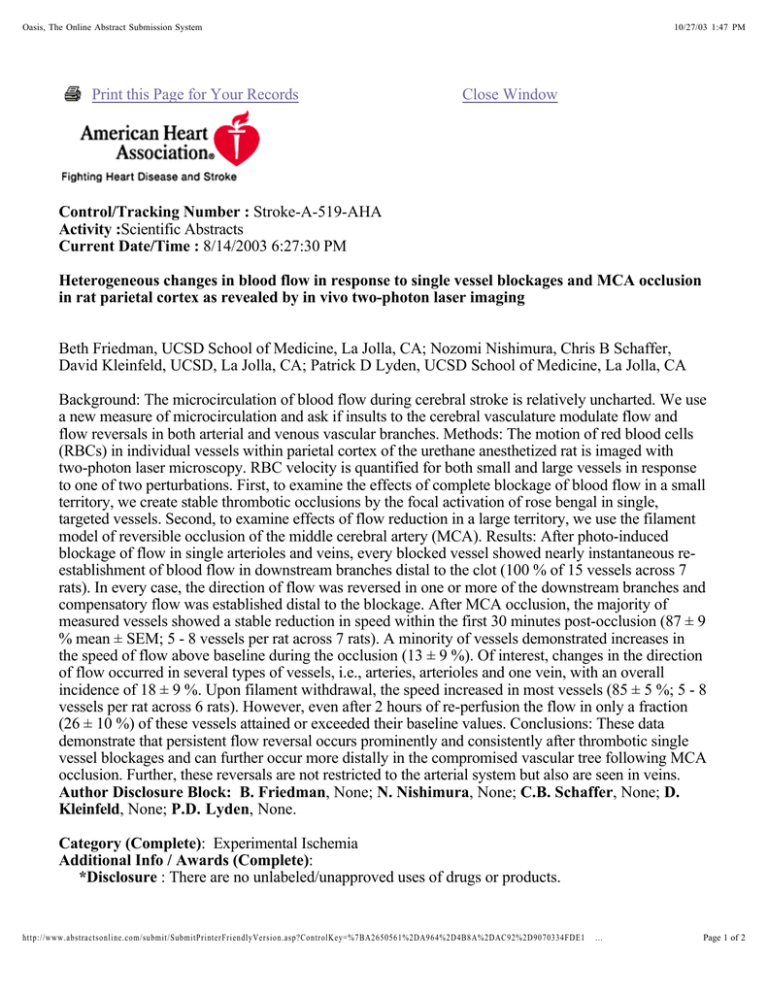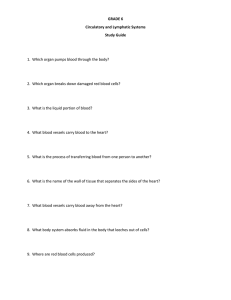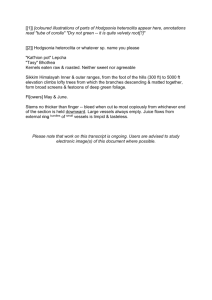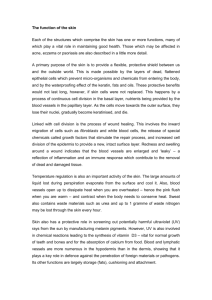
Oasis, The Online Abstract Submission System
Print this Page for Your Records
10/27/03 1:47 PM
Close Window
Control/Tracking Number : Stroke-A-519-AHA
Activity :Scientific Abstracts
Current Date/Time : 8/14/2003 6:27:30 PM
Heterogeneous changes in blood flow in response to single vessel blockages and MCA occlusion
in rat parietal cortex as revealed by in vivo two-photon laser imaging
Beth Friedman, UCSD School of Medicine, La Jolla, CA; Nozomi Nishimura, Chris B Schaffer,
David Kleinfeld, UCSD, La Jolla, CA; Patrick D Lyden, UCSD School of Medicine, La Jolla, CA
Background: The microcirculation of blood flow during cerebral stroke is relatively uncharted. We use
a new measure of microcirculation and ask if insults to the cerebral vasculature modulate flow and
flow reversals in both arterial and venous vascular branches. Methods: The motion of red blood cells
(RBCs) in individual vessels within parietal cortex of the urethane anesthetized rat is imaged with
two-photon laser microscopy. RBC velocity is quantified for both small and large vessels in response
to one of two perturbations. First, to examine the effects of complete blockage of blood flow in a small
territory, we create stable thrombotic occlusions by the focal activation of rose bengal in single,
targeted vessels. Second, to examine effects of flow reduction in a large territory, we use the filament
model of reversible occlusion of the middle cerebral artery (MCA). Results: After photo-induced
blockage of flow in single arterioles and veins, every blocked vessel showed nearly instantaneous reestablishment of blood flow in downstream branches distal to the clot (100 % of 15 vessels across 7
rats). In every case, the direction of flow was reversed in one or more of the downstream branches and
compensatory flow was established distal to the blockage. After MCA occlusion, the majority of
measured vessels showed a stable reduction in speed within the first 30 minutes post-occlusion (87 ± 9
% mean ± SEM; 5 - 8 vessels per rat across 7 rats). A minority of vessels demonstrated increases in
the speed of flow above baseline during the occlusion (13 ± 9 %). Of interest, changes in the direction
of flow occurred in several types of vessels, i.e., arteries, arterioles and one vein, with an overall
incidence of 18 ± 9 %. Upon filament withdrawal, the speed increased in most vessels (85 ± 5 %; 5 - 8
vessels per rat across 6 rats). However, even after 2 hours of re-perfusion the flow in only a fraction
(26 ± 10 %) of these vessels attained or exceeded their baseline values. Conclusions: These data
demonstrate that persistent flow reversal occurs prominently and consistently after thrombotic single
vessel blockages and can further occur more distally in the compromised vascular tree following MCA
occlusion. Further, these reversals are not restricted to the arterial system but also are seen in veins.
Author Disclosure Block: B. Friedman, None; N. Nishimura, None; C.B. Schaffer, None; D.
Kleinfeld, None; P.D. Lyden, None.
Category (Complete): Experimental Ischemia
Additional Info / Awards (Complete):
*Disclosure : There are no unlabeled/unapproved uses of drugs or products.
http://www.abstractsonline.com/submit/SubmitPrinterFriendlyVersion.asp?ControlKey=%7BA2650561%2DA964%2D4B8A%2DAC92%2D9070334FDE1
...
Page 1 of 2
Oasis, The Online Abstract Submission System
10/27/03 1:47 PM
*Presentation Type : Oral Preferred
Male/Female : Female
Ethnic Background : Caucasian
AHA Member? : No
Keyword (Complete): Animal models ; Ischemic stroke ; Imaging ; Reperfusion ; Photothrombosis
Status: Complete
American Heart Association
7272 Greenville Avenue
Dallas, Texas 75231
Powered by OASIS - © 1996 - 2003 Coe-Truman Technologies, Inc. All rights reserved.
http://www.abstractsonline.com/submit/SubmitPrinterFriendlyVersion.asp?ControlKey=%7BA2650561%2DA964%2D4B8A%2DAC92%2D9070334FDE1
...
Page 2 of 2






